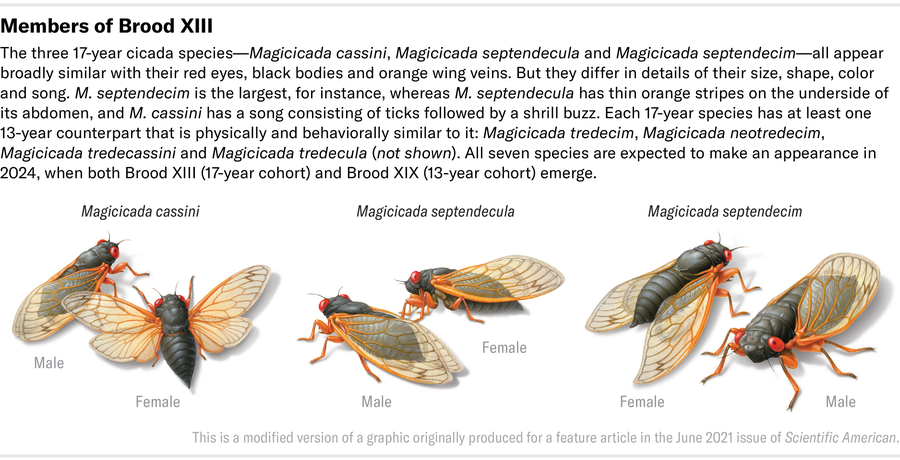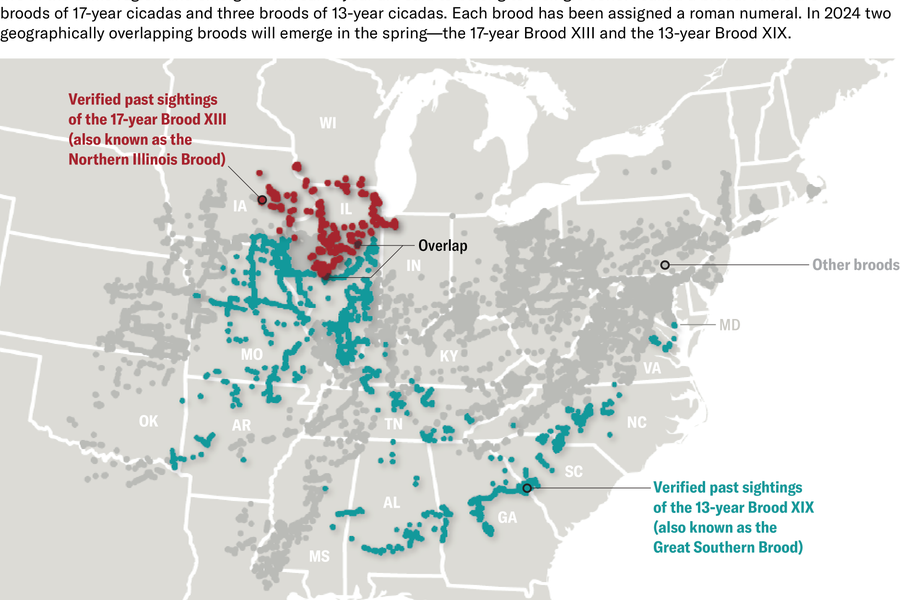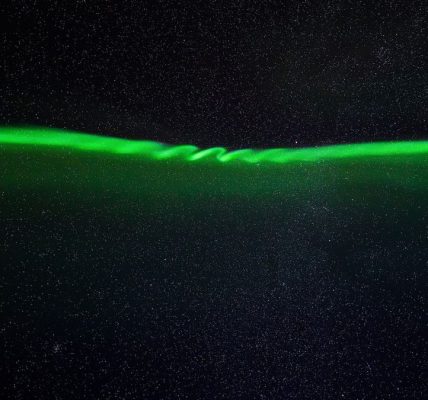This spring two broods of periodical cicadas will pour out of the bottom for a weeks-long stint of mating and egg laying throughout swaths of the jap half of the U.S. The bugs are giant and loud—but when that’s a grim image, simply take into account their emergence as a substitute as nature’s invitation to an all-you-can-eat land-shrimp buffet.
So, with some limitation, it’s okay in case your canine or cat chows on a couple of juicy bites. You’re welcome to take action, too. In spite of everything, insects resembling cicadas and crustaceans resembling shrimp all belong to the identical class of animals, referred to as arthropods, that are characterised by their laborious outer skeleton. And similar to the shrimp that we all know and love, the crunchy coating of a cicada hides a tasty nibble of protein—the type of snack craved by numerous animals and even some vegetation.
“All the pieces eats bugs,” says Julie Lesnik, an anthropologist at Wayne State College. “They’re the essential dietary factor that Earth provides us. They’re animal-based proteins; they’ve all the identical advantages as beef however in a tiny, environment friendly little bundle.”
On supporting science journalism
If you happen to’re having fun with this text, take into account supporting our award-winning journalism by subscribing. By buying a subscription you might be serving to to make sure the way forward for impactful tales concerning the discoveries and concepts shaping our world in the present day.
And the seven species of periodical cicadas that decision the Japanese U.S. residence have one other interesting attribute. People not often see these bugs, which spend 13 or 17 years growing underground, however once they emerge, the bugs are virtually unavoidable. That’s as a result of cicadas make use of a tactic scientists dub “predator satiety”—they arrive aboveground in such giant numbers concurrently that not even a forest filled with hungry birds, mammals and fish can eat their manner via the complete inhabitants.

Daniel P. Huffman and John Cooley, modified by Jen Christiansen
Cicadas don’t have many choices for self-defense: they fly slowly and don’t have any nasty chew, sharp backbone, poison or foul style to guard them from being eaten, leaving the bugs susceptible to numerous meat eaters. In different phrases, for people and our pets, cicadas are each fully defenseless and briefly plentiful.
That’s no purpose to binge on the bugs, nonetheless. Sufficient cicadas must survive and reproduce to make sure the subsequent generations emerge in 2037 throughout the U.S. South and in 2041 in Illinois, for the 13- and 17-year broods, respectively.
Pet house owners must be notably cautious about what number of cicadas their dogs or cats would possibly munch, says Rena Carlson, a veterinarian and president of the American Veterinary Medical Affiliation. The bugs’ crunchy exoskeletons can irritate pets’ digestive tracts, and a few bugs could include pesticides and related chemical compounds. Consuming too many—the extent of which varies with the scale of the pet—can lead to short-term signs resembling intestinal upset, vomiting and diarrhea, she notes. Present intestinal issues would possibly benefit extra warning as properly. Carlson recommends talking along with your veterinarian about any issues and, in fact, having your pet examined if signs persist.
“However actually the general message is they aren’t going to trigger loads of hurt if [your pet] eats one or two,” Carlson says. “The warning is just in opposition to consuming too many.” Protecting cats inside and canines on leashes are each notably sensible methods throughout a cicada emergence, she notes.
Individuals within the U.S. could have much less want than their canine companions to gobble down cicadas. Each Lesnik and one other anthropologist who focuses on edible bugs, Gina Hunter of Illinois State College, say that the history of European colonization in North America is a powerful drive behind the disgust so many individuals residing within the U.S. really feel for the prospect of consuming bugs. Our closest residing kinfolk, chimpanzees, have been recognized to plan instruments to higher entry termites and ants, Lesnik notes, and folks all through recorded historical past have eaten bugs—even Aristotle, Hunter provides.
“Bugs are a really broadly used meals useful resource amongst an enormous variety of world cultures—and have been since time immemorial,” Hunter says.

However when European colonizers got here to what’s now the U.S., they started equating Indigenous habits of consuming bugs, lizards and the like with the conduct of individuals they thought of uncivilized and inferior. “That narrative is what has brought about us to now discover [insects] disgusting—it’s not the bugs themselves,” Lesnik says. “It’s this narrative, this worry of wanting uncivilized, that has been with us for tons of of years.”
Hunter agrees that disgust about consuming bugs is extra about our cultural narratives than bugs themselves. “I believe that we establish bugs with filth and with decay,” Hunter says, in addition to with spoiled meals. “We instantly go to these pure sorts of explanations, however that doesn’t maintain up below scrutiny as a result of a number of bugs are strictly vegetarian and far cleaner consuming than different gadgets like lobsters and different bottom-feeders and different issues that we extremely prize these days as meals.”
Colonization has erased many Indigenous traditions of consuming bugs, Lesnik and Hunter word, particularly within the jap U.S., with its longer historical past of occupation. One remaining story of periodical cicadas’ historic significance comes from the Onondaga Nation in what’s now upstate New York. In 1779 American troops devastated Onondaga territory below the orders of George Washington. The Onondaga have been left with burned villages and little to eat within the face of a bitter winter. However within the spring the native brood of 17-year cicadas emerged in time to feed them. The nation has celebrated the cicadas, which most lately appeared in 2018, ever since.
However even white colonists with loads to eat munched a cicada right here and there, Lesnik says. She’s discovered tales of lumberjacks of the period having fun with them whereas working. “For these males within the woods, these cicadas [were] a enjoyable snack for them. It was not a survival factor,” she says.
As we speak some edible insect afficionados observe of their footsteps, says Joseph Yoon, a chef and founding father of Brooklyn Bugs, an advocacy group for edible bugs. His solely warning to potential cicada eaters is that folks allergic to shellfish may be delicate to bugs.
When gathering cicadas, Yoon notes that folks ought to take into account authorized restrictions and the appliance of pesticides and different chemical compounds when choosing a harvest web site. He’s additionally cautious to examine every insect as a result of cicadas can carry a fungal infection that eats away the bug from its tail. “I truly hand choose each single cicada [that I cook],” Yoon says. “It may appear very tedious, nevertheless it’s necessary to me as a result of I’m going to be feeding them to individuals. In doing so, I can ensure that they’re not listless, that there’s life within the cicada.”
Cicadas could be eaten at three totally different life levels: nymph, teneral and grownup. All three levels sport the distinctive purple eyes that set periodical cicadas aside from the so-called annual cicadas that don’t synchronize their emergence. Cicadas come aboveground as brownish nymphs with stubby wings. After the bugs full their remaining molt, they spend a couple of days as ghost-white tenerals with full-size wings. The cicadas solely develop into full adults when their remaining exoskeleton hardens and their physique darkens.
Though it’s attainable to gather nymphs by digging them out of the bottom, Yoon says they’re cleaner if you happen to look forward to them to emerge on their very own phrases. He additionally recommends gathering adults earlier within the emergence. “The earlier you acquire the adults, the extra meat there’ll be on them,” he says.
Regardless of the stage, Yoon says, acquire the cicadas alive after which rinse the bugs, dry them and freeze them—which each euthanizes the bugs and preserves them for future consumption. If you’re able to prepare dinner—he doesn’t advocate consuming them uncooked—operating them below cool water will shortly defrost the bugs. Some individuals want to take away the wings, however that isn’t vital.
From there, choices abound. “I’ve accomplished the whole lot from frying them with loads of aromatics and including them to stir-fries, including them as a topping on prime of guacamole or one thing,” Yoon says of the nymphs, which can be blanched or fried in butter earlier than they’re coated with chocolate for a sweeter chew. His favourite approach for nymphs is to ferment them in kimchi. “All of the kimchi juices sort of get absorbed into the cicada nymph, and it sort of pops and bursts in your mouth,” he says. “It’s actually simply fairly magical to organize and revel in.”
Grownup cicadas are additionally versatile, he says. “I’ve added the adults in just about any dish that I make,” Yoon says, noting examples resembling fried rice, stir-fried noodles and pasta sauces. “The one limitation we have now with cooking with cicadas is our personal creativeness.”









